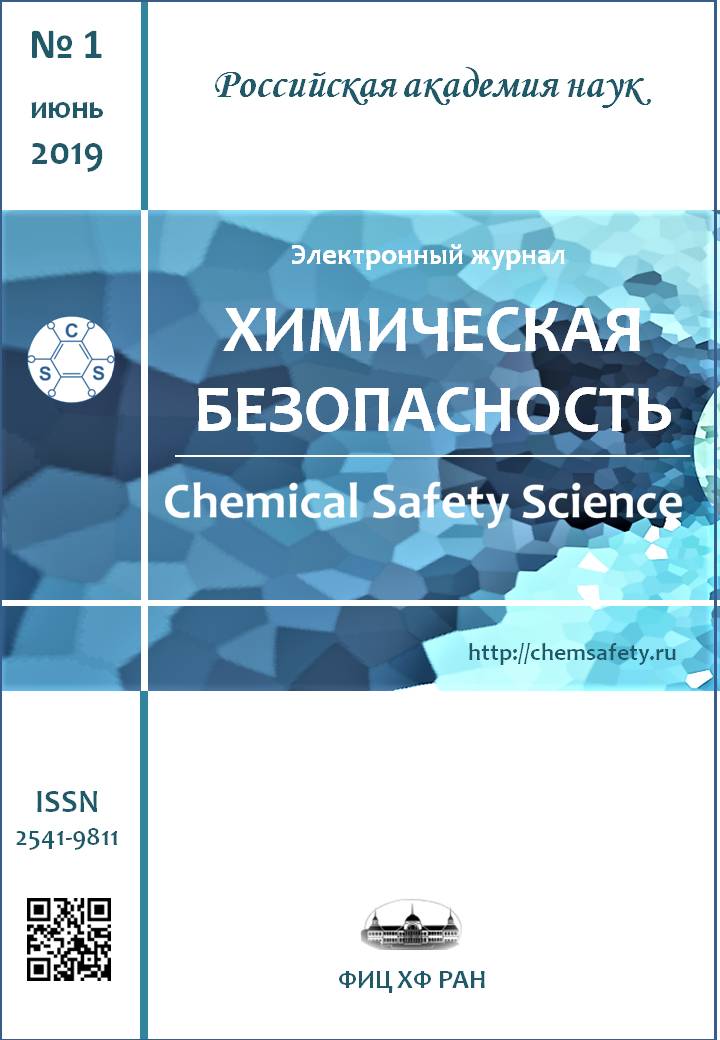PHOTOCATALYTIC ACTIVITY OF IMMOBILIZED METALLO-TETRAPYRROLE COMPLEXES IN HYDROGEN PEROXIDE MEDIA
Abstract
Tetrapyrrolic macrocyclic compounds and their metal complexes are an important class of coordination compounds widely applied for development of materials with a broad range of functional properties, for example, highly sensitive redox systems for monitoring potentially toxic objects in solutions, or biocidal agents possessing an activity against pathogenic microorganisms, etc. The paper presents results of studying photocatalytic activity of silica immobilized metal-tetrapyrrole (i.e. tetraphenylporphyrin, phthalocyanine, and chlorophyll) complexes in hydrogen peroxide decomposition reaction. A linear correlation has been established between the photocatalytic activity of a number of p-, d0-, and d10-metal complexes of the studied macrocycles in the decomposition of hydrogen peroxide and their ability to generate a photopotential. These photophysical and photochemical characteristics are interrelated and can be used for evaluation and prediction of each other. In addition, the examined systems can be considered as a special treatment tool for destroying hazardous chemical compounds or harmful biological structures.
References
Lobanov A.V., Gromova G.A., Gorbunova Yu.G., Tsivadze A.Yu. // Him. bezop. 2017. V. 1. No. 1. P. 54 [in Russian]. DOI: 10.25514/CHS.2017.1.11431.
Bannikova D.A., Kononenko A.B., Lobanov A.V. // Him. bezop. 2017. V. 1. No. 2. P. 88 [in Russian]. DOI: 10.25514/CHS.2017.2.10983.
Lobanov A.V., Olkhov A.A., Popov A.A. // Him. bezop. 2018. V. 2. No. 2. P. 78 [in Russian]. DOI: 10.25514/CHS.2018.2.14104.
Lobanov A.V., Nagovitsyn I.A., Chudinova G.K. // Him. bezop. 2018. V. 2. No. 2. P. 119 [in Russian]. DOI: 10.25514/CHS.2018.2.14109.
Clayton R.K. Photosynthesis: Physical mechanisms and chemical patterns. Cambridge: Cambridge University Press, 1980. 281 p.
Hillier W., Wydrzynski T. // Biochimica et Biophysica Acta. 2001. V. 1503. No. 1-3. P. 197. DOI: 10.1016/S0005-2728(00)00225-5.
Lobanov A.V., Kholuiskaya S.N., Komissarov G.G. // Doklady Physical Chemistry. 2004. V. 399. No. 1-3. P. 266. DOI: 10.1023/B:DOPC.0000048071.52900.f4.
Tanielian C., Schweitzer C., Mechin R. et al. // Free Radical Biology and Medicine. 2001. V. 30. P. 208. DOI: 10.1016/S0891-5849(00)00460-3.
Komagoe K., Katsu T. // Analytical Sciences. 2006. V. 22. No. 2. P. 255. DOI: 10.2116/analsci.22.255.
Lobanov A.V., Rubtsova N.A., Vedeneeva Yu.A. et al. // Doklady Chemistry. 2008. V. 421. No. 2. P. 190. DOI: 10.1134/S0012500808080065.
Ensing B., Buda F., Baerends E.J. // Journal of Physical Chemistry A. 2003. V. 107. No. 30. P. 5722. DOI: 10.1021/jp0267149
Ilatovskii V.A., Shaposhnikov G.P., Dmitriev I.B. et al. // Russian Journal of Physical Chemistry. A. 1999. V. 73. P. 1855.
Ilatovskii V.A., Shaposhnikov G.P., Dmitriev I.B. et al. // Russian Journal of Physical Chemistry. A. 1999. V. 73. P. 2026.
Frisch M.J., Trucks G.W., Schlegel H.B., et al. Gaussian 03 (ReVision A.1). Pittsburgh: Gaussian Inc., PA, 2003.
Darwent J.R., Douglas P., Harriman A. et al. // Coordination Chemistry Reviews. 1982. V. 44. P. 83. https://doi.org/10.1016/S0010-8545(00)80518-4.
Copyright (c) 2019 A. V. Lobanov, and M. Ya. Melnikov

This work is licensed under a Creative Commons Attribution-NonCommercial 4.0 International License.












